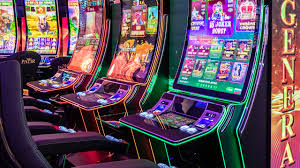Slot machines have captivated players for generations, transforming the gambling landscape into a vibrant patchwork of colors, sounds, and excitement. Many people are lured in by the chance to hit a jackpot, while others are drawn to the thrill of spinning the reels. These mechanical marvels have evolved from simple one-armed bandits into complex digital systems that boast immersive themes and innovative gameplay mechanics. In this blog post, we will dive deep into the world of slot machines, exploring their history, functionality, psychological impact, and emerging trends in the gaming industry.
The Fascinating History of Slot Machines
The story of slot machines is a rich tapestry woven with innovation, entertainment, and social change. From their modest beginnings to their rise as staples in casinos worldwide, understanding this evolution provides insight into why they remain so popular Mu88 casino.
The Origins of Slot Machines
The origin of the slot machine can be traced back to the late 19th century when Charles Fey introduced the Liberty Bell in 1895. This mechanical device featured three spinning reels adorned with symbols like horseshoes, diamonds, and the iconic Liberty Bell itself. Players pulled a lever to set the reels in motion, hoping to line up matching symbols to win coins. The simplicity of this design laid the groundwork for future innovations.
The Liberty Bell was revolutionary not only because it was the first automated gambling device but also because it captured the imagination of the public. As gambling became increasingly popular, other inventors began to create their versions of slot machines, each adding unique features. This era marked the beginning of a rapid evolution in both technology and player experience.
The Golden Age of Slots
By the early 20th century, slot machines had gained widespread acceptance in bars and clubs across America. The legalization of gambling in certain states further propelled their popularity. Companies began producing more sophisticated games, developing mechanisms that allowed for multiple paylines and bonus features.
During this golden age, slots were often referred to as “fruit machines” due to their fruity symbols, which included cherries, lemons, and watermelons. These themes resonated with the everyday player, making the games feel accessible and relatable. The combination of simple gameplay and the allure of winning money made slot machines a fixture in American culture, laying the groundwork for modern casino establishments.
The Digital Revolution
As technology advanced, so too did the design of slot machines. The introduction of electronic components in the 1960s marked a significant turning point. Electronic slots offered new features, such as light displays, sound effects, and even the ability to link multiple machines together for progressive jackpots—an enticing prospect for players seeking larger payouts.
The 1990s ushered in the era of online gambling. With the advent of the internet, players could now experience the thrill of slot machines from the comfort of their homes. Online casinos emerged, offering thousands of different titles, many of which drew inspiration from traditional machines while incorporating modern graphics and storytelling techniques.
This digital evolution has transformed how people interact with slot machines, allowing for seamless integration of thematic elements and dynamic gameplay. It has expanded the reach of slot machines to a global audience, creating new communities of players who share strategies and experiences online.
